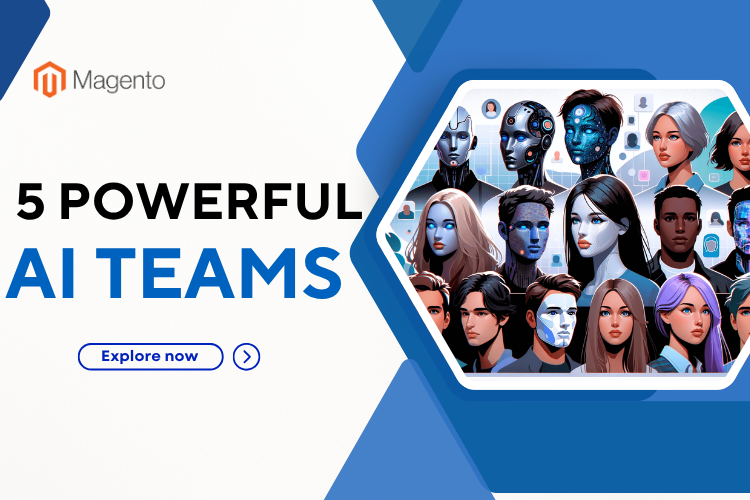
Creating a digital version of a human face that talks, moves, and feels real isn’t just a magic trick—it’s one of the most technical and creative challenges in modern coding. The best AI teams doing this work aren’t just building code that mimics speech and movement. They’re teaching machines how to feel lifelike, how to emote in ways that make viewers forget for a second that they’re looking at a screen. For coders, engineers, and curious tech folks, these AI teams offer a peek at the edge of what’s possible. And trust us—what they’re doing is wild.
From ultra-smooth lip sync to avatars that show subtle human emotions, these AI teams are pushing the boundary of what software can do. Some are perfecting voices. Others are making faces that can frown, blink, or even smirk in believable ways. And as digital communication moves faster than ever, these teams are shaping how we might talk, sell, teach, or even perform online in the very near future.
Let’s take a closer look at five of the most interesting and active AI firms building the future of realistic digital humans—and how they’re making their code feel less robotic and more like us.
Table of Contents
1. Synthesia – The AI Team That Gives Video a Human Face

The AI team behind Synthesia didn’t start with avatars. They started with a video. Video that could change the way people train, learn, or share a message across countries and languages. Then, once they built that system, they started asking questions: what if the person delivering the message didn’t need to be real? What if they could code a digital face that moved naturally, spoke clearly, and matched human language patterns—not just word for word, but emotion for emotion?
That’s where things really started to evolve. Synthesia’s developers have created a system where the avatars don’t just sound human—they feel human. The eyes blink on beat with speech. The mouth syncs down to the syllable. And behind it all is a framework that combines deep learning with natural language modeling. What’s especially cool is how the AI team has built tools that let you change a script on the fly, and the avatar keeps up. It doesn’t just recite. It adjusts.
And that’s not simple. That takes thousands of hours of training data, including facial tracking, voice modulation, and frame-by-frame tuning. It’s a level of detail that makes it hard to tell if you’re watching an actor or an algorithm. For coders looking to get into video-AI crossover territory, Synthesia is an AI team worth watching closely.
2. Hour One – Redefining AI Personas for Professional Use

When you think about digital avatars, you might picture something for gaming or marketing. But Hour One is taking that idea and flipping it on its head. They’re creating avatars that can teach a class, run a customer service script, or deliver a speech—in a way that feels just real enough to hold your attention, but flexible enough to customize again and again.
The team’s biggest strength might be how they blend video realism with script automation. You upload a script, choose a presenter, and suddenly, you’ve got a full video with a face, voice, and gestures that look startlingly real. They’re not building characters in a fictional sense—they’re building people who can perform real-world tasks. And that gives them a ton of flexibility for industries like education, HR, and corporate training.
Behind the scenes, this AI team is using deep neural networks that take speech patterns and link them directly to visual performance. The timing has to be exact. The phrasing has to match. And even more important, the emotional flow of the speaker has to sync with the words. That’s what makes their avatars work. In fact, Hour One has become a quiet favorite for companies needing to deploy AI chatbots that don’t feel like chatbots.
What Hour One does best is erase that digital divide just enough to make the avatar feel like a human co-worker rather than a piece of software. And they’re doing it with tech that’s coded to scale, whether you’re making one video—or a thousand.
3. DeepBrain – Emotional Intelligence Meets Real-Time Video AI

There’s a moment when you’re watching something generated by DeepBrain, and you lean in because something about the face feels… not just lifelike, but familiar. It’s not that the avatar looks exactly like someone you know—it’s that it acts like someone you might know. There’s a real sense of rhythm, pacing, and micro-expression that tricks the brain into lowering its defenses.
That’s not an accident. The DeepBrain AI team has spent years training its systems to recreate the nuance of human behavior on video. Their secret sauce isn’t just about video synthesis. It’s about making sure that the digital face responds to subtle shifts in tone, emotion, and context. The muscles around the mouth, the tilt of the chin, even the movement of the eyes—those details aren’t just graphic overlays. They’re data-driven, and they move with the speech, not behind it.
This AI team’s avatars also respond smoothly to language variation. If a sentence ends with excitement, the avatar perks up. If the line is flat or technical, the delivery becomes more neutral. These micro-adjustments matter. Especially when you’re trying to make a viewer feel like they’re in the room with a real person. And while that may sound small, for developers and UX teams, that’s the entire game.
4. HeyGen – The AI Team That’s Eliminating the Uncanny Valley

If you haven’t checked out HeyGen yet, you’re in for a surprise. This is the team that’s been catching eyes across the web for how smooth, natural, and frighteningly real their avatars look. They aren’t just creating presenters who look human—they’re creating presenters who move human. There’s a difference. A big one.
Part of what makes HeyGen’s work stand out is how finely this AI team has tuned their systems to voice cadence, emotional tone, and facial expression. These aren’t avatars that sit there stiffly and deliver lines. These are expressive, responsive, and incredibly nuanced characters that feel almost too real to be digital. Mid-conversation, you’ll catch a flicker in the eyes, a shift in posture, and you’ll start wondering who’s behind the screen.
The power of AI generated video doesn’t just come from sound or image quality. It comes from the seamless connection between the two—and HeyGen nails it. When a line is funny, the avatar smirks. When it’s serious, the face follows suit. And unlike most avatar tools, these don’t fall into the “uncanny valley.” They clear it. Cleanly.
That’s partly due to the AI team’s next-gen rendering engine and partly due to how they train their data sets. But it’s also how they’ve rethought the entire avatar experience—from the way you write the script to how the avatar with AI tech performs it back. The result? A system that’s hard to beat for creators, educators, marketers, or really anyone who wants a digital face that doesn’t feel like one.
5. Didimo – Personalized Avatars from a Photo, Built by a Stellar AI Team

What makes Didimo’s approach different is that they start from you. Literally. You upload a photo or a scan of a human face, and their system spins it into a 3D avatar that moves, speaks, and behaves with a high degree of accuracy. It’s kind of like turning yourself into a video game character—but with a professional-grade level of polish.
Where other firms aim for smooth and scalable, Didimo leans into personalization. Their goal is to let anyone create a digital version of themselves that can talk, act, and present. And for teams in gaming, digital storytelling, or even online identity creation, that’s a massive step forward.
What’s impressive about their tech is the speed. In just minutes, a digital avatar is ready to go—complete with matching voice, expressions, and gestures. And it doesn’t stop there. Didimo also gives users the ability to customize further: hairstyle, clothing, mood, tone. It’s all driven by intuitive inputs, but under the hood, the code is doing some serious heavy lifting.
By prioritizing individuality and realism, Didimo has carved out a niche that feels fresh in a space that can sometimes get repetitive. If you’re building for VR, immersive experiences, or any environment where identity matters, this team’s work will feel like the missing link between flat profiles and full-blown digital humans.
Final Thoughts
Digital avatars are no longer just side projects or novelties. They’re becoming central to how we communicate, teach, sell, and create online. And behind the most realistic faces on the internet are AI teams—coders, engineers, and dreamers—building platforms that feel alive. Whether you’re a developer looking to break into this space or just curious about how these characters are made, these five AI teams offer a look at what’s coming—and why it matters.











![[SALE OFF] Discount 30% All Premium Extensions On Christmas And New Year 2025 christmas-and-new-year-2025](https://landofcoder.b-cdn.net/wp-content/uploads/2024/12/christmas-and-new-year-2025-1-218x150.png)






